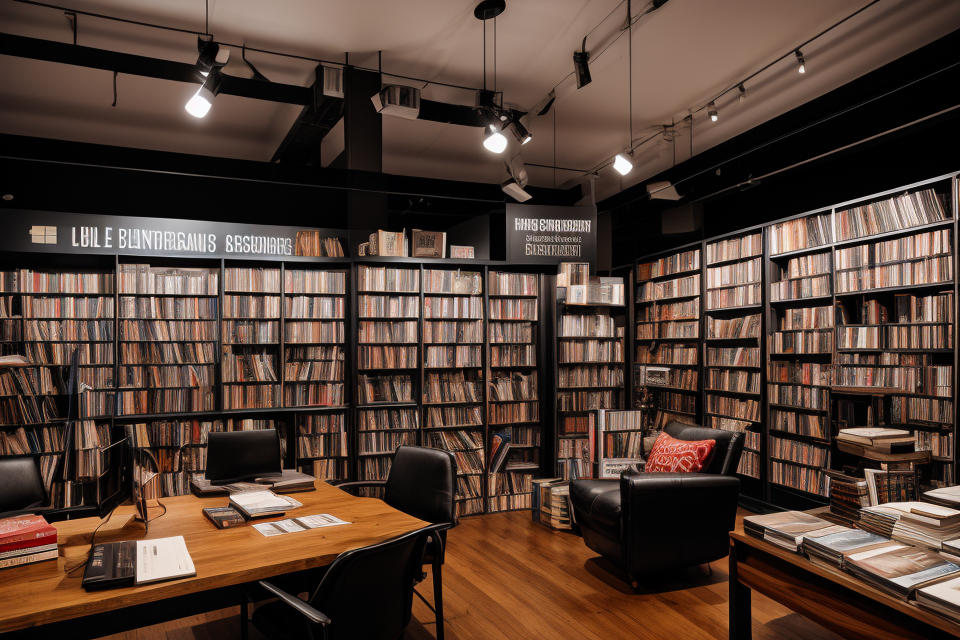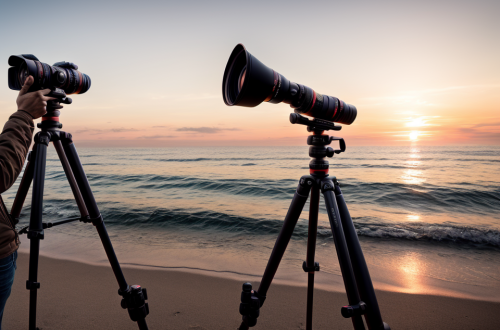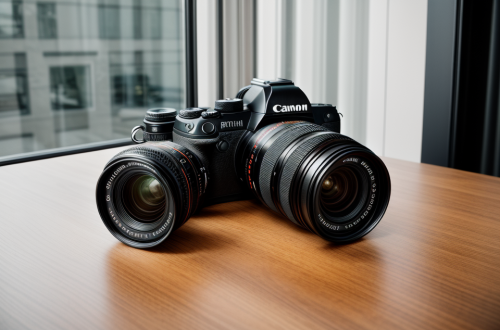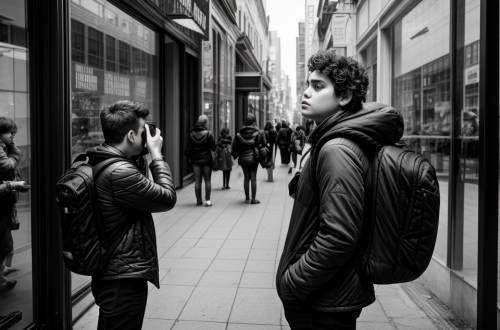The world of photography is vast and diverse, with countless lenses available to suit every purpose and style. However, among the vast array of lenses, there is one that stands out as an essential tool for every photographer – the 50mm lens.
Whether you’re a seasoned professional or a beginner just starting out, the 50mm lens is a must-have for any photographer’s kit bag. This versatile lens is ideal for a wide range of shooting scenarios, from portraits and street photography to landscapes and still life.
In this comprehensive guide, we’ll explore the many benefits of the 50mm lens and provide you with all the information you need to choose the right lens for your needs. From understanding the different types of 50mm lenses available to tips for getting the most out of your lens, this guide has everything you need to become a master of the 50mm lens. So, whether you’re looking to improve your photography skills or simply want to understand why the 50mm lens is considered the essential lens for every photographer, this guide is for you.
What is the one lens every photographer should have?
A versatile zoom lens
A versatile zoom lens is a type of lens that offers a wide range of focal lengths, making it suitable for various photography genres and situations. This lens type is a popular choice among photographers due to its flexibility and convenience.
Why a zoom lens is essential
A zoom lens provides photographers with the ability to change the focal length of the lens without having to swap out lenses. This feature is particularly useful for photographers who do not want to carry multiple lenses with them or for those who want to capture different scenes without the need for switching lenses.
Flexibility in framing
One of the main advantages of a zoom lens is the ability to change the framing of a scene. With a range of focal lengths available, photographers can capture wide-angle shots that include a lot of the scene or zoom in to capture specific details. This flexibility allows photographers to adapt to different shooting scenarios and create a variety of compositions.
Composition variety
A zoom lens enables photographers to experiment with different composition techniques. For example, photographers can use a wide-angle lens to capture expansive landscapes or a telephoto lens to capture distant subjects. This versatility allows photographers to create unique and creative images that would not be possible with a fixed focal length lens.
Ease of use
Zoom lenses are often more user-friendly than prime lenses because they allow photographers to adjust the focal length without having to move or adjust their position. This convenience makes it easier for photographers to capture images quickly and efficiently, especially when shooting fast-moving subjects or in challenging environments.
The benefits of a versatile zoom lens
All-in-one solution
A versatile zoom lens can act as an all-in-one solution for photographers who do not want to carry multiple lenses. These lenses often have a wide range of focal lengths, making them suitable for shooting landscapes, portraits, and other genres of photography. This convenience can save photographers time and effort by eliminating the need to switch lenses.
Cost-effective
Zoom lenses are often more cost-effective than buying multiple prime lenses to cover the same focal length range. A versatile zoom lens can replace several prime lenses, making it a more budget-friendly option for photographers.
Weight and size
Zoom lenses are typically smaller and lighter than prime lenses with similar focal lengths. This makes them a convenient option for photographers who want to travel light or who need to carry their equipment for extended periods.
In conclusion, a versatile zoom lens is an essential tool for photographers due to its flexibility, convenience, and cost-effectiveness. This type of lens provides photographers with the ability to capture a wide range of scenes and subjects, making it a valuable addition to any photographer’s kit.
Choosing the right lens
Considerations for different shooting styles
Landscape and nature photography:
- A wide-angle lens (14mm to 35mm) is ideal for capturing sweeping vistas and grand vistas.
- A telephoto lens (70mm to 200mm) is perfect for framing distant landmarks and wildlife.
Portrait and event photography:
- A standard lens (50mm to 85mm) is ideal for capturing portraits and event photography, as it allows for natural framing and perspective.
Street and documentary photography:
- A prime lens (35mm to 50mm) is ideal for capturing candid moments and street scenes, as it allows for a natural perspective and sharp detail.
Factors to keep in mind
- Budget: The price of the lens should be considered, as well as the photographer’s budget.
- Image quality and performance: The lens should be able to capture high-quality images and perform well in different lighting conditions.
- Durability and build: The lens should be durable and built to withstand the demands of frequent use and travel.
- Features and functions: The lens should have features and functions that are relevant to the photographer’s shooting style and needs.
It is important to note that the right lens for one photographer may not be the right lens for another. Therefore, it is important to consider the photographer’s personal shooting style and needs when choosing the right lens.
Building your lens collection
Additional lenses to consider
When building your lens collection, it’s important to consider additional lenses that can expand your creative possibilities and enhance your photography skills. Here are some lenses to consider:
Prime lenses
Prime lenses are a popular choice among photographers because they offer several benefits, including:
- Sharpness: Prime lenses are typically sharper than zoom lenses because they have a fixed focal length, which means there are fewer moving parts and fewer opportunities for the lens to degrade image quality.
- Aperture: Prime lenses often have a larger aperture, which allows for more control over depth of field and enables you to shoot in low-light conditions.
- Image quality: Prime lenses are often made with higher-quality glass and construction, which can result in better image quality and reduced chromatic aberration.
Popular prime lenses for different shooting styles include:
- 50mm: This focal length is great for portraits, street photography, and general purpose shooting.
- 35mm: This focal length is versatile and suitable for a variety of shooting styles, including landscape, architecture, and street photography.
- 24mm: This focal length is ideal for landscape, architecture, and interior photography.
Specialty lenses
Specialty lenses are designed for specific shooting scenarios and can offer unique creative possibilities. Some popular specialty lenses include:
Macro lenses
Macro lenses are designed for close-up photography and allow you to capture fine details and textures of your subject. They typically have a focusing distance of 1:1, which means the lens can capture life-size images of your subject.
Wide-angle lenses
Wide-angle lenses are perfect for landscape, architecture, and interior photography. They allow you to capture a wide field of view and are great for capturing expansive scenes.
Telephoto lenses
Telephoto lenses are ideal for shooting distant subjects, such as wildlife and sports. They allow you to capture detailed images of your subject from a distance and can also be used for portrait photography.
Tilt-shift lenses
Tilt-shift lenses are unique because they allow you to control the plane of focus and create a miniature effect in your images. They are popular among architectural and landscape photographers and can produce stunning results.
Accessories to enhance your lens experience
Filters
Filters are an essential accessory for photographers who want to enhance the quality of their images. They are used to modify the light that enters the camera lens and can have a significant impact on the final result. There are several types of filters available, each designed to achieve a specific effect. In this section, we will discuss the most common types of filters used by photographers.
The importance of using filters
Filters are essential because they allow photographers to control the light that enters the camera lens. By using filters, photographers can enhance the colors, contrast, and clarity of their images. They can also protect the lens from dust, dirt, and other particles in the air. Additionally, filters can be used to achieve creative effects, such as softening the light or creating a unique color cast.
Polarizing filters
Polarizing filters are one of the most popular types of filters used by photographers. They are designed to reduce glare and reflections in the image, which can help to enhance the colors and contrast. Polarizing filters work by reducing the amount of light that enters the camera lens, which can help to reduce the intensity of bright areas in the image. This effect is particularly useful when photographing landscapes, where reflections on water or other surfaces can be distracting.
UV/skylight filters
UV/skylight filters are designed to protect the camera lens from the harmful effects of ultraviolet light. They can help to reduce the amount of UV light that enters the lens, which can help to improve the overall clarity and sharpness of the image. UV/skylight filters are particularly useful when photographing outdoors, where the sun can cause harsh shadows and blown-out highlights.
Circular polarizers
Circular polarizers are similar to polarizing filters, but they are designed to be used with lenses that have a front filter thread. They work by reducing the amount of light that enters the camera lens, which can help to enhance the colors and contrast of the image. Circular polarizers are particularly useful when photographing landscapes, where reflections on water or other surfaces can be distracting.
ND filters
ND filters are designed to reduce the amount of light that enters the camera lens. They are used to create long exposures, where the camera shutter is open for an extended period of time. ND filters are particularly useful when photographing moving water or other fast-moving subjects, where a long exposure can create a blurred effect. They are also useful when photographing in bright light conditions, where a long exposure can cause overexposure.
Lens hoods
Why use a lens hood
A lens hood is an essential accessory for any photographer, as it offers several benefits to improve your photography experience. Here are some reasons why you should consider using a lens hood:
Protection from damage
One of the primary advantages of using a lens hood is that it protects your lens from damage. The hood shields the front element of your lens from accidental impacts, such as bumps or scratches, which can be detrimental to the quality of your images.
Reduced lens flare
Lens flare occurs when light enters the lens at an oblique angle, resulting in unwanted bright spots or streaks in your images. By using a lens hood, you can reduce the likelihood of lens flare, as it helps to block stray light from entering the lens.
Polarizer use
A lens hood can also make it easier to use a polarizing filter with your lens. Polarizing filters help to reduce glare and reflections, resulting in more saturated colors and increased contrast in your images. By attaching a polarizing filter to your lens, you can achieve better results with the help of a lens hood.
Overall, using a lens hood is a simple yet effective way to protect your lens, reduce lens flare, and improve the quality of your images. It is an essential accessory that every photographer should consider adding to their kit.
Tripods and monopods
Stability and low-light shooting
Tri
FAQs
1. What is the one lens every photographer should have?
The one lens that every photographer should have is a versatile prime lens, such as a 50mm f/1.8 lens. This type of lens is a staple for most photographers because it allows for a wide range of shooting possibilities, from portraits to landscapes, and it is usually very affordable.
2. Why is a 50mm lens considered essential?
A 50mm lens is considered essential because it provides a natural field of view that is similar to the human eye. This makes it a great lens for a variety of shooting scenarios, as it allows the photographer to capture images in a way that closely resembles how the human eye would see them. Additionally, the 50mm focal length is perfect for both indoor and outdoor shooting, making it a versatile option for photographers of all skill levels.
3. Are there any other types of lenses that can be considered essential?
While a 50mm prime lens is considered the most essential lens for most photographers, there are other types of lenses that can also be considered essential, depending on the photographer’s needs. For example, a standard zoom lens, such as a 24-70mm lens, can be considered essential for photographers who need a lens that covers a wide range of focal lengths for general purpose shooting. Similarly, a telephoto zoom lens, such as a 70-200mm lens, can be considered essential for photographers who need to capture distant subjects, such as sports or wildlife.
4. What are the benefits of using a prime lens over a zoom lens?
One of the main benefits of using a prime lens over a zoom lens is that prime lenses tend to be smaller, lighter, and more affordable. Additionally, prime lenses often have a wider maximum aperture, which allows for greater control over depth of field and allows for shooting in low light conditions. Finally, prime lenses often provide better image quality and sharper details than zoom lenses, as they have fewer elements and are simpler in design.
5. Are there any downsides to using a prime lens?
One of the main downsides to using a prime lens is that it requires the photographer to physically move to change the composition of the shot, as opposed to zooming with a zoom lens. This can be limiting for photographers who need to quickly adjust their shot without having to move their position. Additionally, prime lenses often have a fixed focal length, which means that they may not be suitable for all shooting scenarios.
6. What is the best way to choose an essential lens for my photography needs?
The best way to choose an essential lens for your photography needs is to consider your shooting style and the types of images you want to capture. If you are a general purpose photographer who shoots a wide range of subjects, a standard zoom lens may be the best option. If you are a portrait photographer, a prime lens with a wide aperture may be ideal. Similarly, if you are a sports or wildlife photographer, a telephoto zoom lens may be the best choice. Ultimately, the most important factor is to choose a lens that fits your shooting style and allows you to capture the types of images you want to create.





